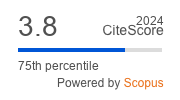Article | Open Access
Co‐Creation in Automated Public Space Lighting Design: Enhancing Safety and Reducing Light Pollution
| Views: | 4264 | | | Downloads: | 3660 |
Abstract: Public space lighting in urban areas is a crucial issue linked to climate change in developed environments. It significantly influences aesthetics, functionality, and the sense of safety while also contributing to the problem of light pollution. However, addressing these challenges requires a balance between technical optimization and environmental considerations, which this study explores through an experimental approach. This study examines the application of advanced digital technologies in designing and optimizing public space lighting, particularly in parks. The focus is on presenting a modular algorithm as a foundation for iterative improvements rather than a fully comprehensive lighting design solution. The article presents an algorithm that iteratively determines the optimal number and placement of lamps based on expected lighting levels. While illuminance levels are considered, future extensions could include additional parameters such as glare, uniformity, and color temperature to meet professional standards. This method has significant potential for involving public space users in lighting optimization. The algorithm relies on expected lighting levels, which can be derived from standards and designer decisions. However, user expectations can also be incorporated into simulations. For instance, an interactive application could allow users to highlight under‐illuminated or overly bright areas, contributing to a co‐created desired lighting map. Lighting levels can be precisely calculated, yet users’ subjective perceptions may be crucial in achieving soft, nature‐friendly lighting. The article presents the algorithm and discusses the potential of designer‐computer and designer‐computer‐user co‐creation for human‐ and nature‐friendly design. This modular framework lays the groundwork for future refinements by integrating professional input and addressing broader lighting parameters.
Keywords: agent‐based modeling; co‐creation in urban design; digital design technologies; lighting optimization algorithms; parks lighting design; participatory design; public space lighting; sustainable urban planning; urban lighting design
Published:
Issue:
Vol 10 (2025): Co-Creation With Emerging Technologies to Address Climate Challenges in Cities
© Jan Cudzik, Michał Nessel, Victor Moczarski. This is an open access article distributed under the terms of the Creative Commons Attribution 4.0 license (http://creativecommons.org/licenses/by/4.0), which permits any use, distribution, and reproduction of the work without further permission provided the original author(s) and source are credited.


